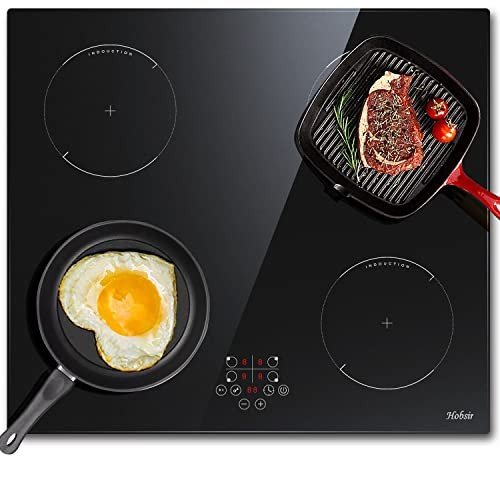5 Laws Everyone Working In Oven And Hob Should Know

The Complete Guide to Ovens and Hobs: Choosing the Right Appliances for Your Kitchen
When it comes to creating culinary work of arts, the value of quality kitchen devices can not be overemphasized. Ovens and hobs are the heart of any kitchen, allowing home cooks and professional chefs alike to develop, bake, and sauté delicious meals. Understanding the different kinds of ovens and hobs, in addition to their functions and functionalities, is important for making informed buying decisions. This post offers an in-depth take a look at ovens and hobs, assisting you browse the choices offered so that you can enhance your kitchen's efficiency and adaptability.
Understanding Ovens
Ovens are important for cooking and baking and been available in various types to satisfy varied cooking needs. Here is an overview of the most typical types of ovens:
1. Conventional Ovens
Conventional ovens work by warming the air inside with gas or electric aspects. They are ideal for baking cakes, roasting meats, and cooking casseroles.
2. Convection Ovens
These ovens utilize a fan to circulate hot air, supplying an even temperature throughout, which can significantly minimize cooking times. They are ideal for baking cookies or roasting veggies.
3. Microwave Ovens
Microwaves cook food rapidly using electromagnetic radiation. They are perfect for reheating leftovers or defrosting frozen foods but are not appropriate for browning or crisping.
4. Wall Ovens
Including a wall oven into your kitchen style can save space and create a sleek visual. They work similar to conventional or convection ovens but are built into the wall for easy access.
5. Variety Ovens
These ovens integrate stovetop burners with an oven, providing flexibility for those who choose a single appliance for all cooking requirements.
| Type | Cooking Method | Best For |
|---|---|---|
| Standard | Electric/Gas | Baking, roasting |
| Convection | Air circulation | Quick cooking, even baking |
| Microwave | Electro-magnetic | Reheating, thawing |
| Wall Ovens | Electric/Gas | Space-saving, sleek design |
| Variety Ovens | Electric/Gas | Versatile cooking |
Checking out Hobs
Hobs, likewise called cooktops or stovetops, supply the surface area to cook pans directly over a heat source. Like ovens, hobs come in different types, which can be classified as follows:
1. Gas Hobs
These hobs use a flame for cooking and provide instant heat control. Ovens Online are preferred by many chefs for their responsiveness and precision.
2. Electric Hobs
Electric hobs use coils or flat surfaces to heat pans. They offer a constant heat source, but they might take longer to cool down compared to gas hobs.
3. Induction Hobs
Induction hobs utilize electromagnetic energy to heat pots and pans directly, making them highly efficient and much faster to cook. They are likewise simpler to clean up as the surface stays reasonably cool.
4. Strong Plate Hobs
These are older technology that uses strong metal plates to provide heat. They are resilient however are less efficient than modern options.
| Type | Heat Source | Benefits | Drawbacks |
|---|---|---|---|
| Gas Hobs | Flame | Immediate heat control | Needs gas connection |
| Electric Hobs | Electric coils | Constant heat | Slower to cool down |
| Induction Hobs | Electromagnetic | Fast cooking, energy-efficient | Requires compatible cookware |
| Solid Plate Hobs | Solid metal plate | Resilience | Less efficient |
Selecting the Right Appliances
Selecting the ideal oven and hob for your kitchen involves considering different factors:
1. Area and Layout
Procedure your kitchen location to figure out the size and placement of the oven and hob. Ensure there is sufficient ventilation, especially for gas devices.
2. Cooking Style
Think about how typically you prepare and the kind of meals you prepare. A convection oven might suit devoted bakers, while somebody who frequently stir-fries may prefer an induction hob.
3. Energy Source
Pick the energy source that best fits your way of life. Gas uses immediate control, while electric and induction hobs offer ease of usage and are typically more energy-efficient.
4. Budget plan
Recognize your budget for kitchen appliances. Ovens and hobs vary considerably in rate, depending on functions and brands. Prioritize important functions that fulfill your needs.
5. Features
Search for performances such as self-cleaning options, clever technology compatibility, specific rack setups for ovens, and security features for hobs.
Often Asked Questions (FAQs)
Q1: What is the difference between a traditional oven and a convection oven?A1: Conventional ovens heat up the air inside without fans, while stove use a fan to flow hot air for more even cooking. Q2: Can I utilize aluminum pots and pans on induction hobs?A2: No, induction hobs need ferrous (magnetic )materials like cast iron or stainless steel to work effectively. Q3: Do gas hobs heat much faster than electric hobs?A3: Yes, gas hobs offer immediate heat, making them much faster for cooking compared to electric hobs. Q4: Is it safe to utilize a microwave oven?A4: Yes, when utilized according to the maker's directions, microwave are considered safe for cooking.
Q5: How often must I clean my oven and hob?A5: For optimum performance, tidy your oven regularly, particularly after spills. Hobs should be wiped down after each use
to prevent accumulation. Ovens and hobs
are important elements of a well-equipped kitchen. Comprehending the various types, their functionalities, and the factors to consider associated with buying
them can drastically improve cooking experiences. Whether Oven And Hobs For Sale is a casual home cook or an expert chef, investing time in picking the right appliances can lead to culinary success and complete satisfaction in the kitchen. By prioritizing features that line up with your cooking style, energy sources that fit your home, and budget plan considerations, you can produce an effective office that inspires culinary creativity.

